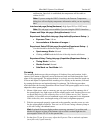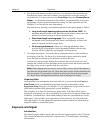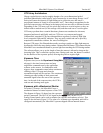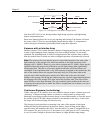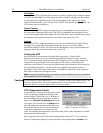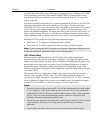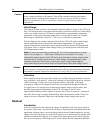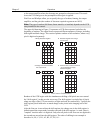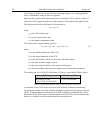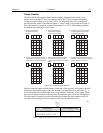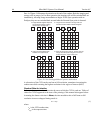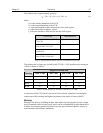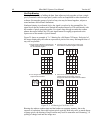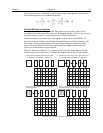
62 MicroMAX System User Manual Version 6.C
After charge is shifted out of each pixel the remaining charge is zero, meaning that the
array is immediately ready for the next exposure.
Below are the equations that determine the rate at which the CCD is read out. Tables of
values for CCDs supported at the tim
e of the printing of this manual also appear below.
The time needed to take a full frame at full resolution is:
t
R
+ t
exp
+ t
c
(1)
where
t
R
is the CCD readout time,
t
exp
is the exposure time, and
t
c
is the shutter compensation time.
The readout time is approximately given by:
t
R
= [Nx · Ny · (tsr + tv)] + (Nx · ti) (2)
where
Nx is the smaller dimension of the CCD
Ny is the larger dimension of the CCD
tsr is the time needed to shift one pixel out of the shift register
tv is the time needed to digitize a pixel
ti is the time needed to shift one line into the shift register
(ts, the time needed to discard a pixel, appears below and in later equations)
The readout time for a 1024x1024 full-frame CCD array is provided in Table 6 below.
CCD Array 1 MHz Readout Time
MicroMAX:1024B
EEV CCD47-10 1024x1024
1.1 sec. for full frame
Table 6. Approximate Readout Time for the Full-Frame CCD Array
A subsection of the CCD can be read out at full resolution, sometimes dramatically
increasing the readout rate while retaining the highest resolution in the region of interest
(ROI). To approximate the readout rate of an ROI, in Equation 2 substitute the x and y
dimensions of the ROI in place of the dimensions of the full CCD. Some overhead time,
however, is required to read out and discard the unwanted pixels.



